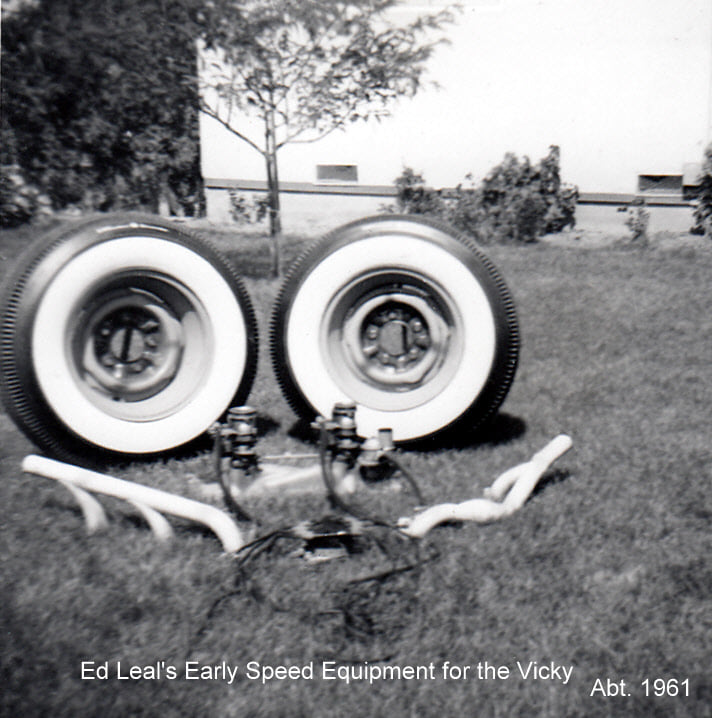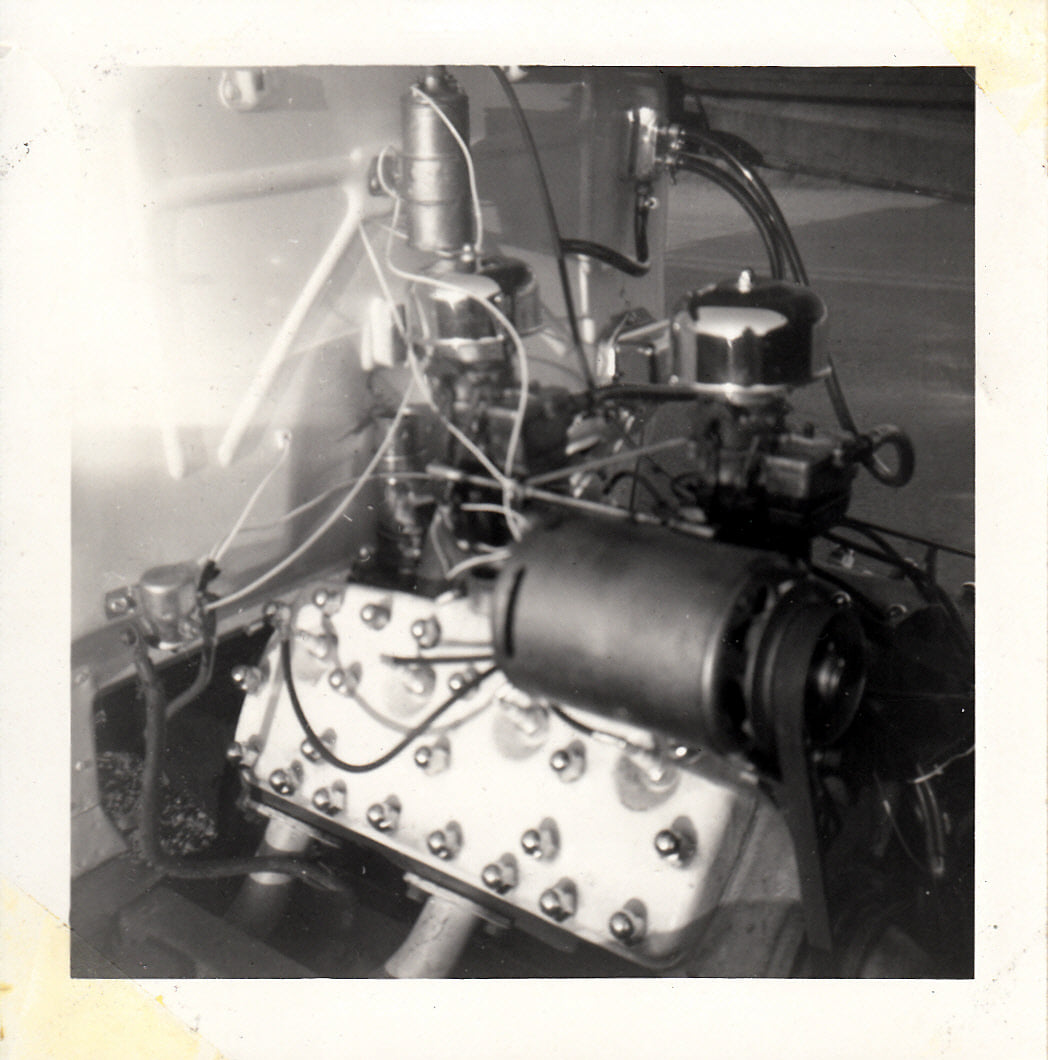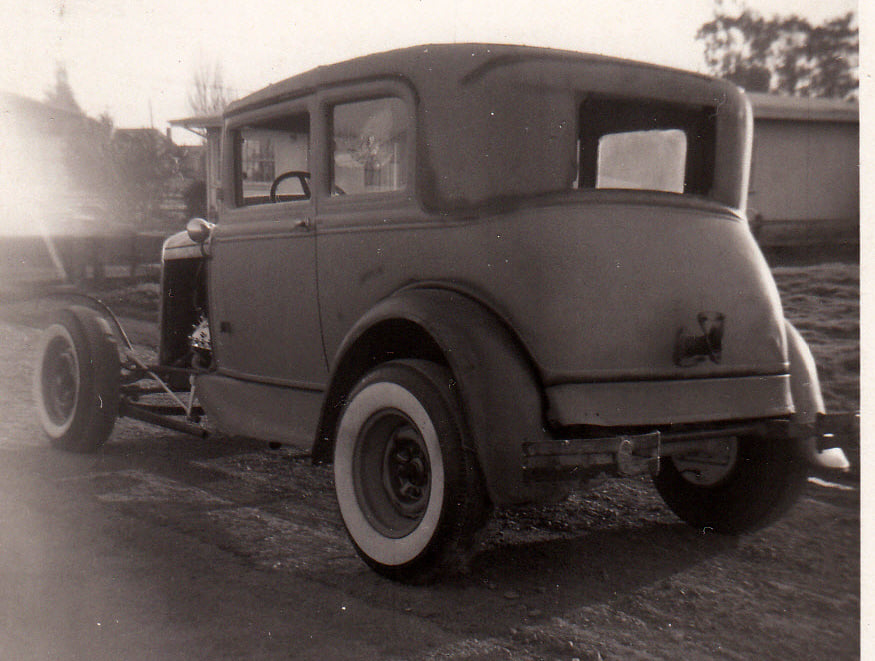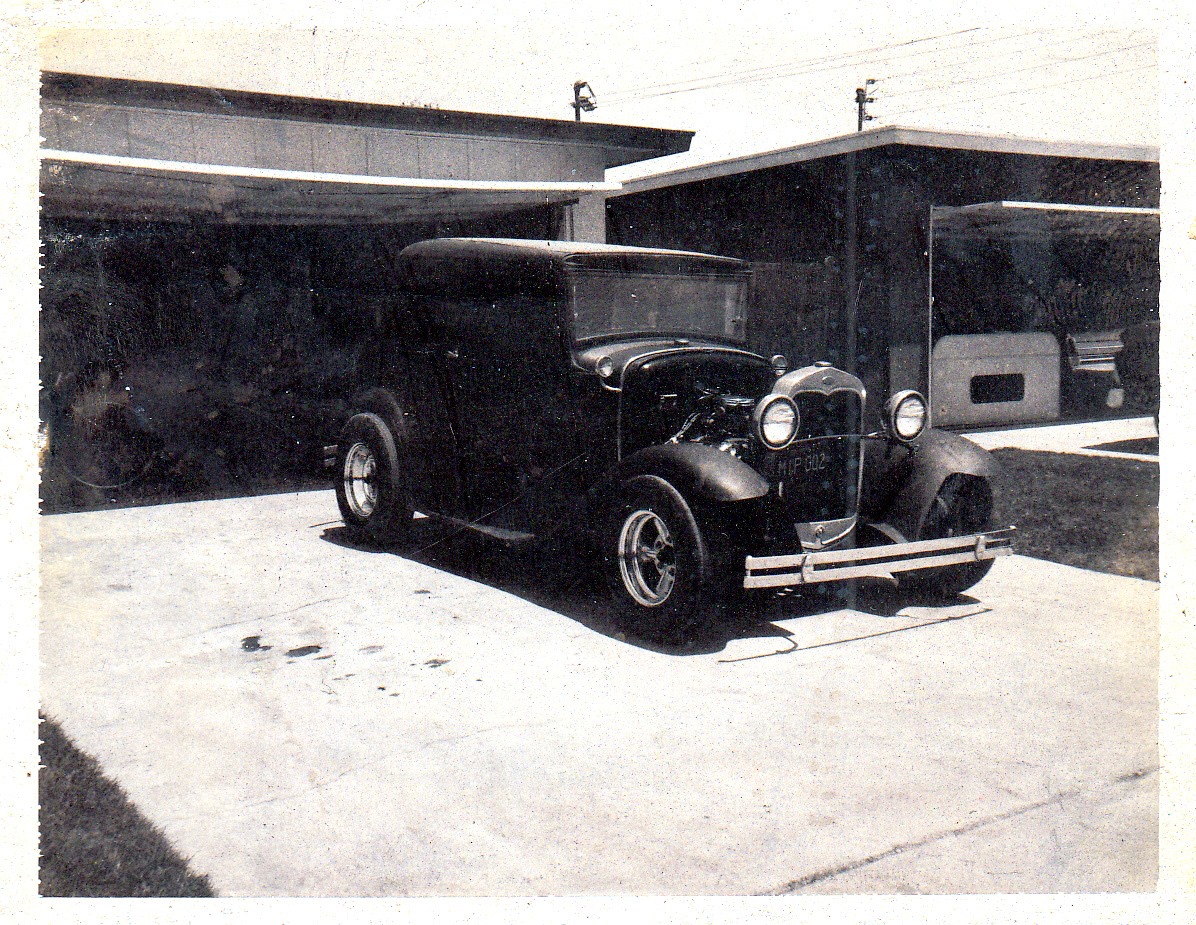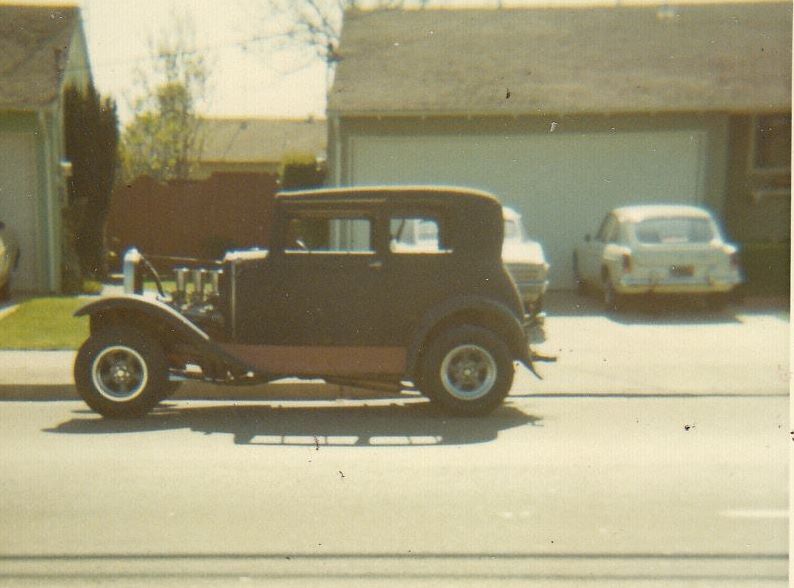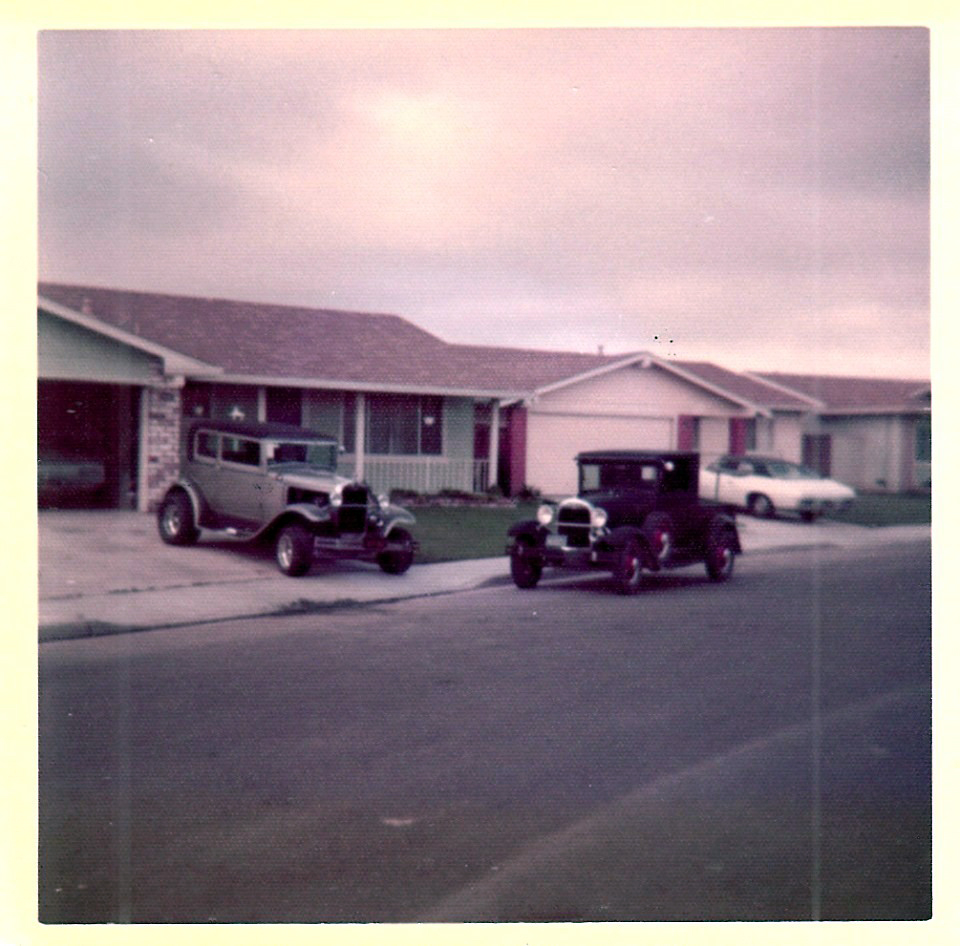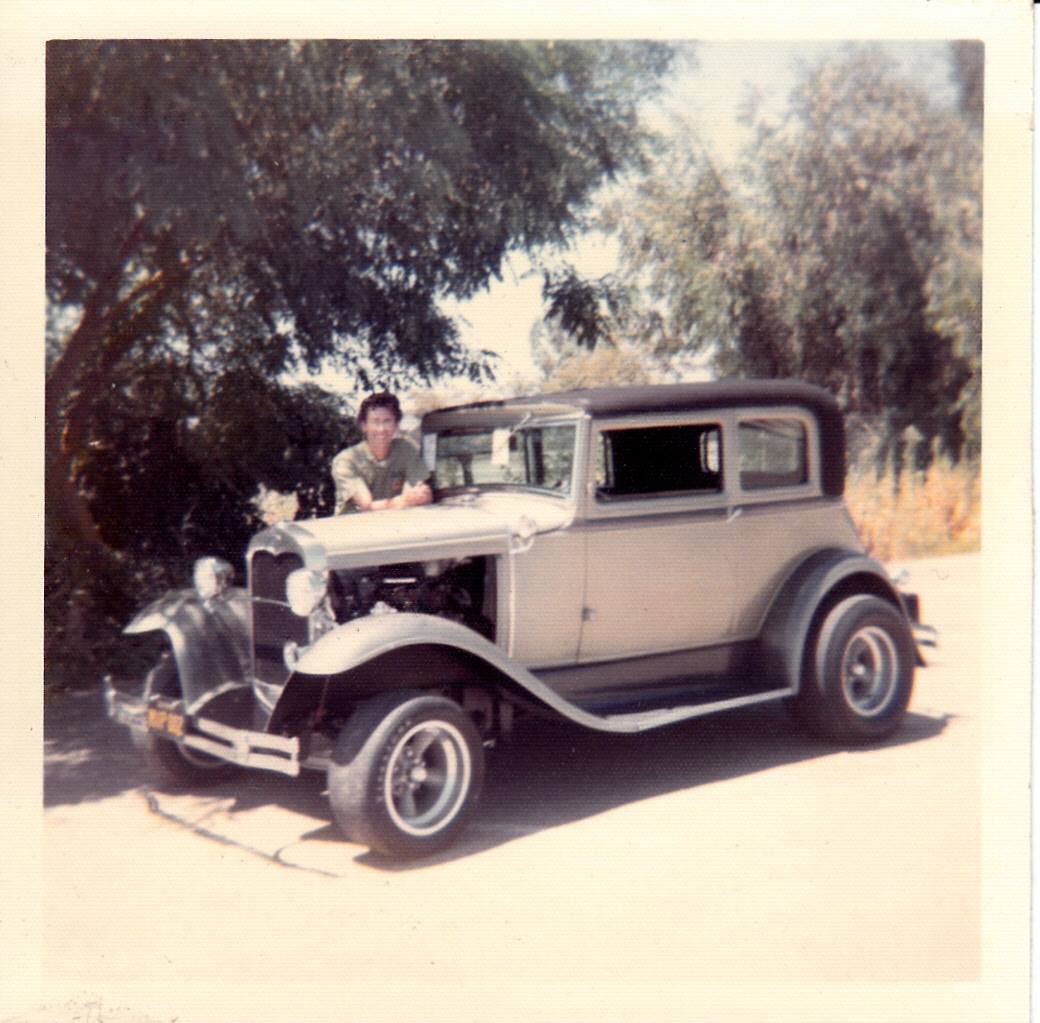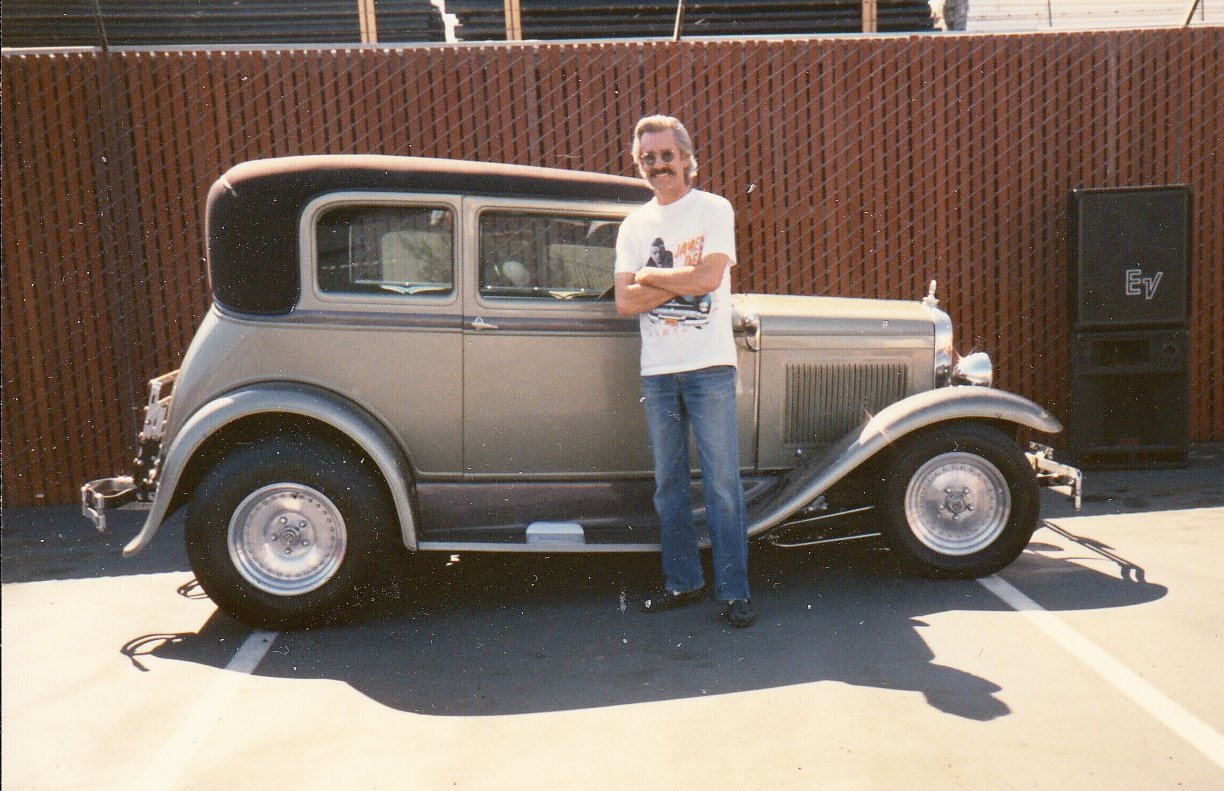Against All Odds: A Victorious Victoria Story
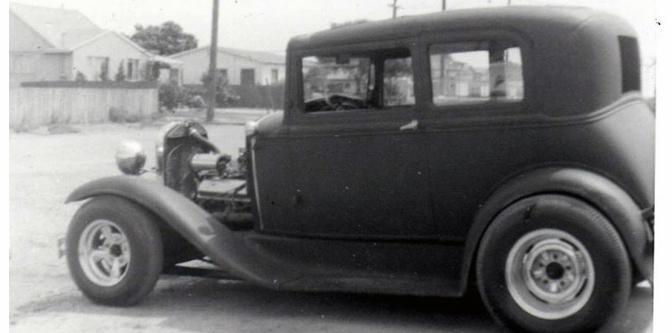
Hot rodders find a way. Regardless of the problem, we work through the day and into the night to find solutions. We study. We ask. We borrow. We learn and we get it done. This isn’t the easiest hobby to be involved with, but I’ve come to find it’s a corner of the world where determined people tend to hang around. You know what I mean.
This week’s story starts with a 3×3 photo of a pile of parts sitting in a backyard somewhere in the world. The snapshot is faded, although it’s filled with very familiar items. Two reversed Lincoln steelies mounted on wide whitewall bias ply tires, two tube headers for a Flathead, two Stromberg carbs—fully plumbed—and a wired V8 distributor lying in the grass. A simple caption gets the ball rolling.
Just like that, I’m hooked. Speed equipment? Vicky? 1961? My mind starts to race. Being the impatient person that I am, it wasn’t long before I had found exactly what I was searching for: pictures of the aforementioned Vicky. The first was of the engine installed in the car, complete with white firewall, full wiring and a pair of shiny new Hellings air cleaners. Next up, there was a ¾ rear shot of the A out on an unpaved driveway. By this point the flathead is in and it has juice brakes on all four corners. Even though the front wishbone isn’t connected and the left front fender is missing, the ubiquitous Mr. Horsepower has found his way into the driver’s side quarter window. This is early-’60s hot rodding at its core.
With the photos, Ed had included a bit of information. “I built that myself,” he wrote. “No job, no money! Paper route! 14. No dad.” There was no doubt in my mind—I had to know more. Conjecture is as old as the art of writing, but there wasn’t much room for that here. The day after first laying eyes on the pile of speed parts, I was on the line with Mr. Ed Leal.
Special Delivery
Born in June 1946, Ed’s life has revolved around things with wheels. He’s retired automotive repair shop owner/restoration specialist who spent more than four decades in the business. In the past 60 years, he’s built everything from Go-Karts and choppers to street machines and early Ford hot rods. When I reached out to find out more about his Model A Victoria, he was more than happy to help bring the story to life.
The tale starts when he was a 14-and-a-half-year-old kid living in the Bay Area city of Newark, California. “At that age, you’re not even driving,” he says. “You just love cars. You just want a car.” Even though he was more than a year away from getting his license, Ed had already cut his teeth on one mechanical project that was far from perfect—his Go-Kart.
“I couldn’t get a good Go-Kart because I didn’t have the cash,” he says, looking back. “All I could afford was a Sears & Roebuck and it was terrible. Just awful. I paid for it with my paper route.” Two years and plenty of modifications later, Ed had a feeling that it was time to sell. The price? $50. He planned to put the money towards a Model A.
I had to ask Ed: why an A? He says that back in those days they were cheap and plentiful. Every once in a while, you would even see stockers driving around on the street. That being said, it was still a major undertaking to find and buy one when you’re not even 15 years old.
It’s important here to introduce Bob, one of the Leal’s family friends. Ed’s father passed away when he was eight, but he says that Bob was always looking out for his best interests. As luck would have it, he was also a long-distance trucker. Once Ed realized he needed a Model A in his life, he asked Bob to keep an eye out for them while he was on the road. And so, when he would return from a trip, Ed would ask if he saw any potential projects. “Oh, I saw one out in Colorado,” he once told him. “The guy was asking $100.”
Well, on Christmas Eve 1961, Ed was in for the surprise of a lifetime. Sometime in the evening, he heard a car pull up out front. “It was dark, and there’s the Vicky,” he recalls. “No engine, no brakes. Bob’s wife was ‘driving’ the Model A, which they chained to the rear bumper of their ’48 Chevy. They had found a Model A Vicky on Mission Boulevard. Bob paid him $50 and he brought it over.”
Ed couldn’t believe it—and he also didn’t have $50. The two worked out a deal. Ed would trade him the Go-Kart if and only if he brought it back to stock. “It had a centrifugal clutch and was geared to go,” Ed says with a laugh. “He was going to give it to his kids, and he didn’t want them killing themselves on it!”
Within the first week of having the Vicky home, Ed had already started tearing it down to build a hot rod. First, he had to start collecting the pieces.
A-V8 on a Budget
Early in the process, he and Bob located a clean 1930 Model A radiator and shell to bolt into place. After studying the VIN number on the frame, Ed concluded that the car was actually an early 1931 Victoria, but since it was produced in the fall of ’30 his new acquisition would work just fine.
Next, Bob bought a ’28 or ’29 Model A four-cylinder, which Ed planned to drop in the car and make it a runner. Well, after riding his friend’s ’banger-powered Model A, he realized that that wasn’t going to cut it for his Vicky. “I wanted a flathead V8!” he says. “I found out my friend’s brother-in-law’s dad put a new motor in his ’47 Ford pickup. The old engine was running when it was pulled out of the truck. I think it was $50.”
With the V8 in his possession, he tore it down to see what he was working with. He discovered that it was an industrial block, but he opted to retain the stock bore and stroke. Keeping performance in mind, he re-ringed it, stuffed it with a Howard M-14 cam and installed a set of fly-cut “cheater heads.” Remember 2×2 Edelbrock intake sitting in the lawn? That, the cam and the pair of Strombergs came from a hardtop Super Modified racer. “It ran pretty good,” Ed says.
Once the engine was installed, Ed focused on getting the car roadworthy. Rather than running the original Model A transmission, he tracked down an early Ford toploader to use behind the flathead. There was one problem: now the Model A brake and clutch pedals wouldn’t work.
This is where the going got tough. Ed was about 15 years old. He didn’t have any money, any tools and he didn’t know how to weld. Yet here he was with this Model A hot rod that was past the point of no return. “If I couldn’t drill a hole and put a bolt in it, I was dead in the water,” he says.
And so, Ed worked with a local gentleman to have the old Model A clutch pedal welded directly to the clutch lever. He whipped up a homemade throttle assembly that he admits was as simple as they come. By this point, he jokes that he had the essentials. “I had a transmission, gas and clutch,” he says.
The car still had its issues. He had cut the front wishbone with a hacksaw and never re-attached it. The brakes didn’t work, and the rearend was not hooked up correctly. Nonetheless, Ed took every opportunity he could to fire it up and get the car in motion. His routine included starting on the gravel driveway, gunning it and then throwing it in reverse to stop it. It worked—most of the time.
On one of these test runs, things didn’t go exactly as planned. Ed will never forget when he and his friend Arnie were trying it out and the driveshaft let go, sending them shooting straight into the garage. “It destroyed my mother’s washing machine!” Ed says. He and Arnie still laugh about it to this day.
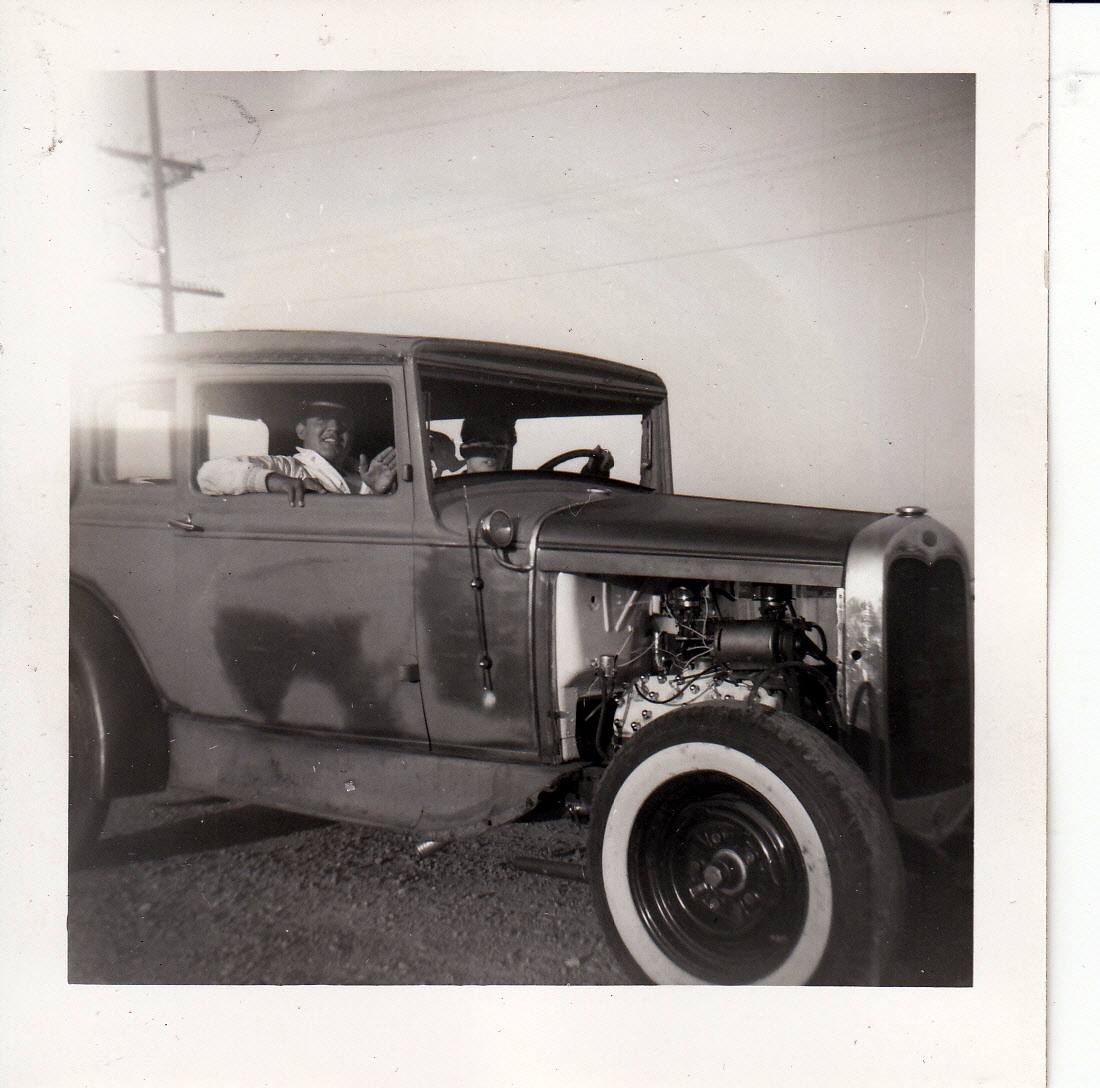
Sixteen-year-old Ed and friend Eddie Ayala hitting the streets, 1961. Note the flex-pipe exhaust and abbreviated wishbone.
Cruising Beyond the Fog
When Ed was in high school in 1963, he scored a rolling chassis from a friend. He figured that if he was updating the suspension and brakes, why not change the engine too? Out with the flathead, in with a ’53 Olds V8. Other highlights included a 3-1/2-inch dropped axle, 4.11 rear gears, five-spokes up front and chrome-reverse wheels in the rear. For this iteration, he sprayed the car with black primer. “It looked mean and nasty sitting down real low,” he says.
Of all the memories, Ed says some of the best moments were spent cruising long after most of the city had gone to sleep. He paints a vivid picture of the Vicky rumbling out of the garage and slipping into the night, cutting through the fog and making a single loop through the drive-in. He says it sounds like something out of a movie, but that’s the way it really was.
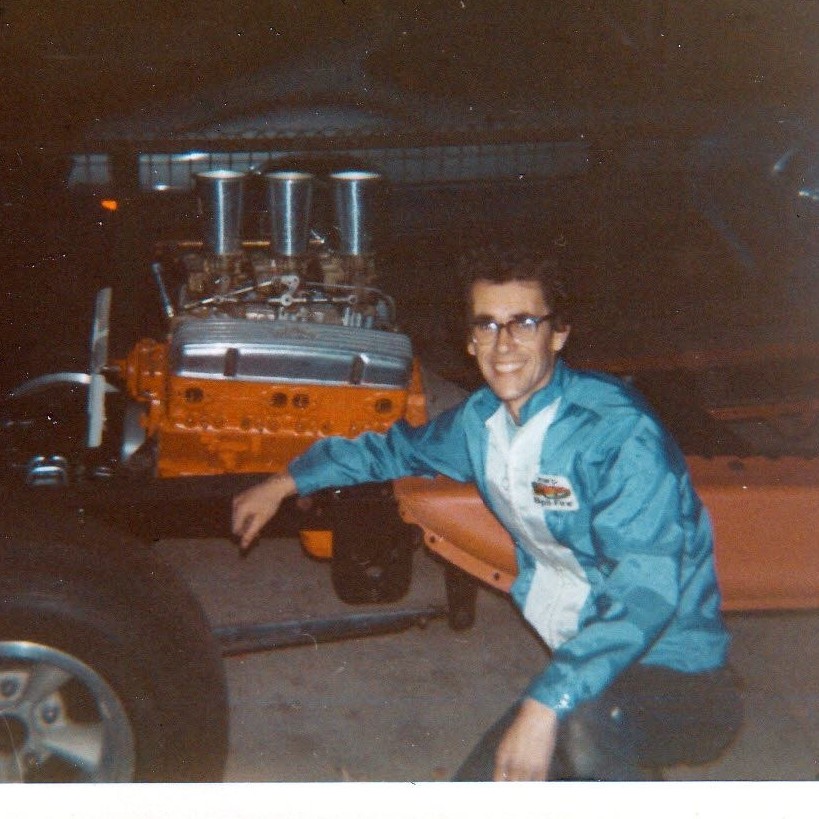
Here’s Ed with the car’s new powerplant complete with a 3×2 intake. Wheels are American Racing five-spokes.
As the decade came to a close, Ed reworked the Vicky yet again. This next version featured a hot 327cid Chevy, nose-up stance and eventually Pontiac Firemist Green paint. He had the fenders sprayed Metallic Charcoal and treated to some far-out webbing. The finished product was nothing short of stunning—and quick too. “I was old enough to do it right,” he says. “Just nail it and it was gone. Chirp chirp.”
Ed held on to the car through the years, making minor changes as he saw fit. He recently passed it on to a new owner, but the good news is that it has stayed basically the same, complete with its two-tone paintjob and diamond pleat interior.
Full Circle
Ed Leal is a hot rodder who made it happen; he had a dream and he went for it. As someone who is working on a Model A of my own, it’s inspiring to hear these stories of people just like you and me who started small and worked their way up.
This Vicky is also a particularly special specimen because it was finished in no less than three different styles, all of which are present on the H.A.M.B. in 2021. This is a prime idea of why—whenever possible—you should start with a body style that you love. Not many can say their Model A has been a flathead-powered A-V8, low-slung street cruiser with an Olds, and a cobwebbed Early Times-esque machine all within a 10-year span. Ed can, and we’re lucky that he took pictures along the way. This is what homebuilt hot rodding is all about.
—Joey Ukrop
Photos courtesy of the Ed Leal collection. Ed is a founding member of Nor Cal Iron club and has some amazing stories to tell. With any luck, we’ll have more of them in the not-so-distant future.
